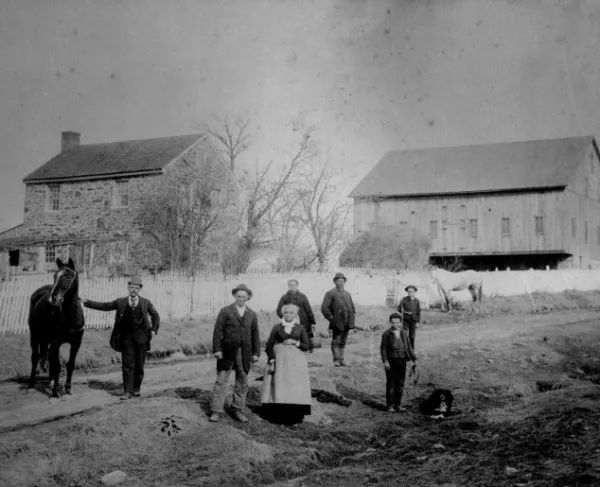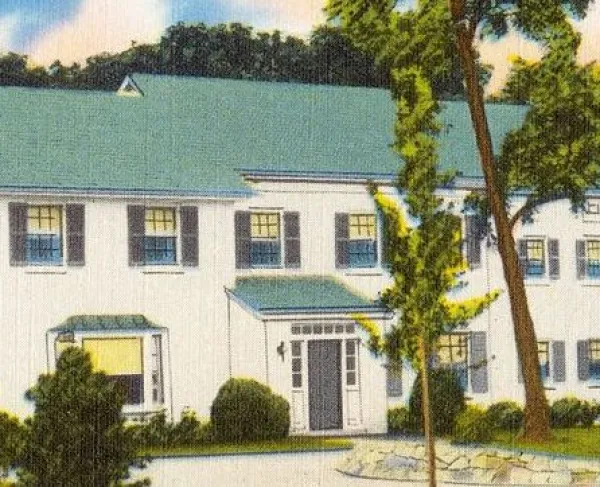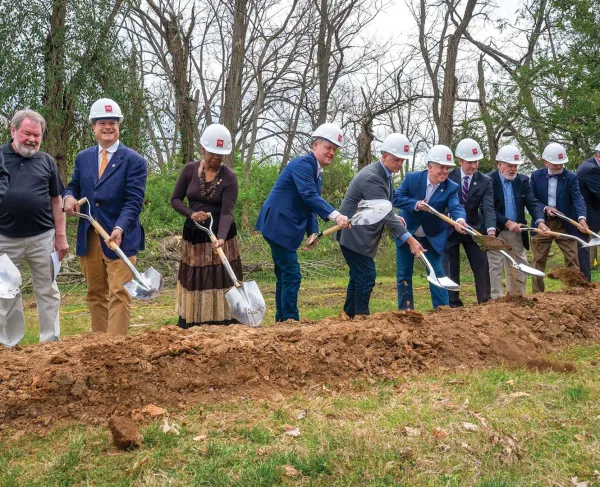The First Day at Gettysburg: Then & Now
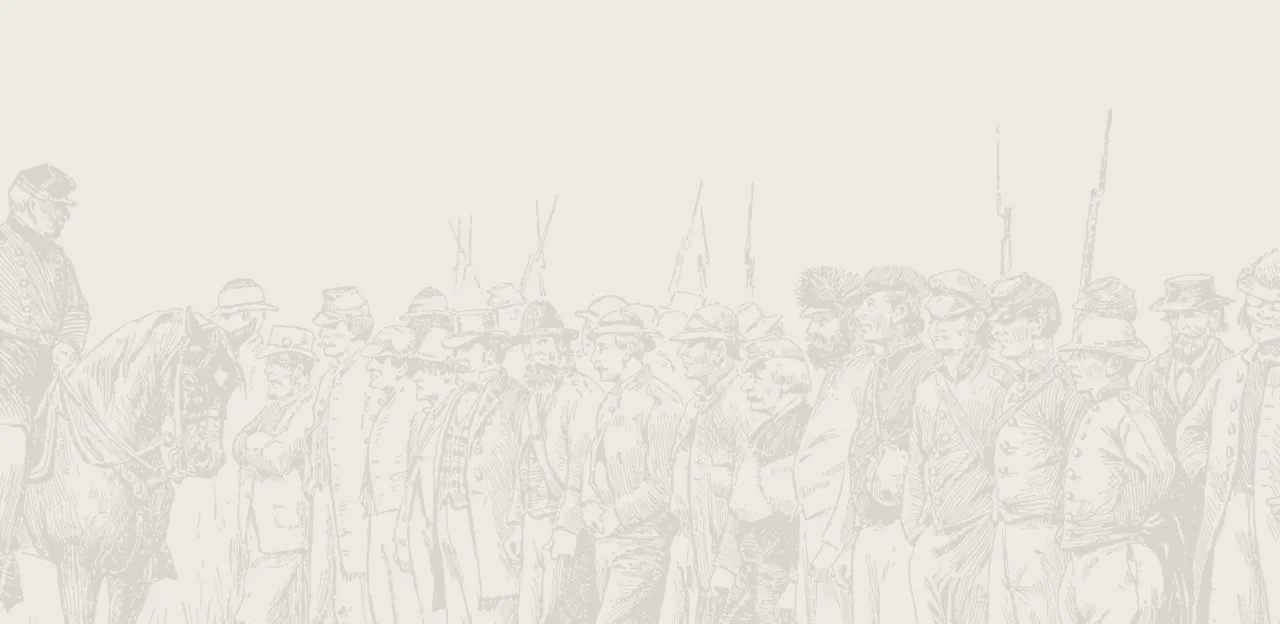
The Civil War Trust had a chance to visit McPherson's Ridge, Willoughby's Run, Herbst Woods, and the "Country Club Tract" with historian and Licensed Battlefield Guide at Gettysburg, Tim Smith. In the interview below, Tim describes the historical importance of this ground to the fighting on July 1, 1863, and the state of the battlefield today.
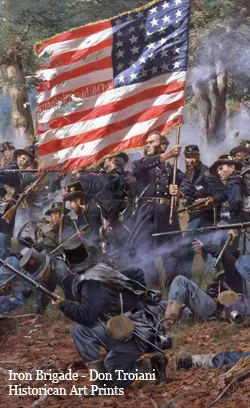
Civil War Trust: Was the fighting on the First Day at Gettysburg as a small and as cavalry-based as it has been portrayed in popular media?
Tim Smith: In recent years, especially with the popularity of the novel, The Killer Angels, and the movie, Gettysburg, there has been a tendency to place of great amount of emphasis on the Union cavalry action early in the first days engagement and less emphasis on the fighting of the infantry that occurred throughout much of the day. Popular books and documentaries have only echoed this overemphasis. The resulting popular view of the fighting on July 1, 1863, is that of a small skirmish, where the only objective of the Union forces was to delay the southerners long enough for the rest of their forces to concentrate on Cemetery Hill, south of the town.
In point of fact, the mornings cavalry action produced very few casualties and did very little to delay the southern advance. It was the timely arrival of the Union Infantry that drove back the first Confederate assault on McPherson’s Ridge that day. And it was the determination and tenacity of the infantry forces on both sides that led to one of the bloodiest stand up fights of the war.
And did this fight, which led to the Civil War’s largest battle, start because of shoes?
TS: The story of the shoe factory is in my opinion one of the greatest myths in American history. It has even appeared as a final Jeopardy question! A book could be written on the story and how it developed over the years. But no matter what people may say or how many times they say it, there was no shoe factory in the town, there was no supply of shoes, and certainly, the Confederates were not coming to Gettysburg to get shoes. Ten roads intersect at the town, and both commanders had issued orders prior to the battle that would lead troops towards that intersection. Simply put, the battle was fought at Gettysburg because the roads led there.
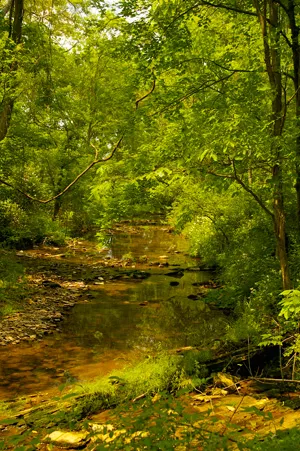
Can you describe the terrain features on both sides of Willoughby’s Run and how those features would impact the battle on July 1?
TS: Named for early settler Willoughby Winchester, Willougby’s Run is a stream which meanders from north to south through the rolling farm fields west of Gettysburg. On either side of this stream are the ridges that were occupied by the opposing forces on July 1st (Herr Ridge to the west and McPherson’s Ridge to the east) On the eastern bank of Willoughby’s Run just south of the Chambersburg Pike was a wooded area often referred to as McPherson’s Woods, but actually owned by John Herbst. The occupation of this woodlot was deemed crucial to the Union defensive position west of the town. According to a soldier in the 2nd Wisconsin, “the grove was our citadel, and it in itself furnished the means of a strong defense. Every tree was a breastwork, every log a barricade, every bush a cover and concealment, and we made good use of every defensive object.” To carry this position, the Southerners were forced to cross the open ground west of Willoughby’s Run (the exact ground that the Trust is helping to save) under fire, and forcibly drive the Union defenders from the woods. Confederates on the afternoon of the First Day’s battle did just that, but at a horrific cost.
Was there actually fighting on the land that Civil War Trust and its partners is trying to preserve?
TS: Over the years that has been a tendency to diminish the action that occurred on the land west of Willoughby’s Run, simply because it was privately held and not accessible to visitors of Gettysburg National Military Park. But the tract is an integral part of the fighting west of town on July 1st. During the early morning, skirmishers of John Buford’s cavalry fell back across these fields towards Willoughby’s Run, followed by Confederates. General James Archer’s Brigade crossed the property in its advance in the morning action and was repulsed with heavy casualties, many of Archer’s men (and Archer himself) being captured on the property itself. During the afternoon of July 1, 1863, Pettigrew’s Brigade swept directly across the property under intense artillery and infantry fire before driving Union forces out of the woods on the eastern side of Willoughby’s Run. Afterward, Pender’s Division swept over these same fields prior to its assault on Seminary Ridge. I would submit to those who argue the land saw little action, that the tract is every bit as important to our understanding of the battle as the fields of Pickett’s Charge.
Can you describe the circumstances surrounding the capture of Confederate General James Archer on July 1st?
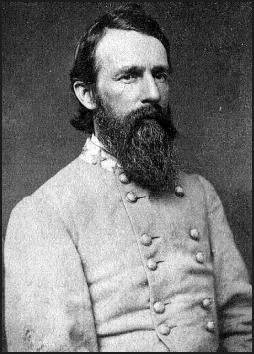
TS: The first shot of the Battle of Gettysburg is said to have been fired by a Union cavalry officer at 7:30 A.M. on July 1, 1863 along the Chambersburg Turnpike three miles west of the town. The Southern column halted and threw forward skirmishers. By 9 A.M. two brigades of General Henry Heth’s Division were in line of battle atop Herr’s Ridge west of Willougby’s Run. Up until that point in the battle, the Confederates had only encountered Union cavalry and were unaware of the approaching Northern infantry. As General James Archer’s brigade moved across the open fields south of Chambersburg Pike, across Willoughby’s Run, and through the Herbst Woodlot they were met by only slight resistance. Suddenly a long line of Union Infantry appeared in their front, and quickly flanked Archer’s brigade on its right. The unexpected turn of events took Archer by surprise and he started to retreat back through the woods and across Willoughby’s Run. Owing to the dense nature of the underbrush near the stream and fact that the brigade had given way so quickly, Archer and about 300 of his men were surrounded and forced to surrender. According to the best sources available, Archer was captured in a clump of willows “about 30 paces [sic] west of Willoughby’s Run,” on what is now private property.
On your tours, you have consistently referred to the fighting in this area as some of the bloodiest of the American Civil War. Could you elaborate on that a little?

TS: Usually, the first day is viewed as just a part of the Battle of Gettysburg as a whole. And it is with some difficulty that we estimate the casualties of the fighting on July 1 because many of the units were involved in the subsequent struggles of July 2 and 3. It is especially difficult to sort out Confederate casualties, much of Hill’s Corps being involved in “Pickett’s Charge.” But with that said, it appears the Union Army had some 18,000 men involved in the fighting on July 1, and suffered some 9,000 casualties. While the Confederates had more than 30,000 men present and lost almost 7,000. So being somewhat conservative, the first day at Gettysburg is easily among the top twenty bloodiest battles of the Civil War and, percentage-wise, it ranks right up there among the bloodiest days of the war. In the fighting in the woods on the east banks of Willoughby’s Run, the 24th Michigan suffered the highest numerical loss of any Union regiment in the battle. And their opponent that day, the 26th North Carolina (who were also in “Pickett’s Charge”), suffered the highest numerical loss of any Confederate Regiment at Gettysburg. And their initial losses occurred on the property that is now the object of this very preservation effort.
Why is it important to preserve this particular piece of land?
TS: The preservation of all historic land is important, and with each property there are those who both support and oppose the efforts of preservation groups like the Civil War Trust. Being a lifetime supporter of preservation, one of the most attractive features of this property is the fact that it had been written off long ago as having been already developed. We have the ability to reverse development, and not just purchase land that is threatened. The preservation of this land sends an important message to future generations.
Update: The Civil War Trust successfully saved the 95-acre "Country Club" tract at Gettysburg in 2011
Learn More: The Battle of Gettysburg
Tim Smith is a Licensed Battlefield Guide and the author of numerous articles and several books on the Battle of Gettysburg and the American Civil War. His John Burns: The Hero of Gettysburg (Thomas Publications, Gettysburg: 2000) covers the role of that Gettysburg civilian in the fighting along McPherson’s Ridge on the afternoon of July 1, 1863.
We're on the verge of a moment that will define the future of battlefield preservation. With your help, we can save over 1,000 acres of critical Civil...
Related Battles
23,049
28,063
